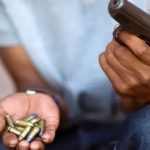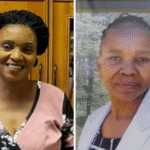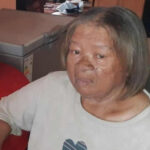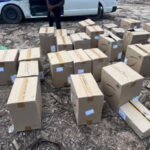Killed and dumped in Hennops River over Operation Vala Umgodi. That is the hard claim many people are now making, and they point to a growing list of details that are not lining up. At the center of this story are three young constables from the South African Police Service: Cebekhulu Linda, 24; Boipelo Senoge, 20; and Keamogetswe Buys, 30. They disappeared on 23 April 2025, on their way from Bloemfontein to Limpopo, assigned to Operation Vala Umgodi. Six days later, their bodies were found in the Hennops River in Centurion, Tshwane. Two other bodies were also pulled from the same river that same week. A white VW Polo linked to the three constables was recovered from the river on 1 May. In the days that followed, officials suggested a tragic accident in bad weather. Families and many members of the public did not accept that conclusion, because the facts they are seeing do not feel complete.
Then another development changed the tone of the national conversation. KwaZulu-Natal Police Commissioner Lieutenant-General Nhlanhla Mkhwanazi, who leads the national Political Killings Task Team, disclosed that dozens of police members have been arrested in cases linked to assassinations, conspiracies, and gun links proven by forensics. He also described a fight inside the police over who controls sensitive dockets. To many people, that briefing did not feel distant or unrelated. It felt like a missing piece. It helped them understand how something dark could happen to police members on duty for a major operation, and how a crash story could be used to cloud the truth.
Here is what can be said with certainty about the timeline. On 23 April, the three constables left Bloemfontein in a white VW Polo. They were headed to Limpopo, on deployment for Operation Vala Umgodi. Constable Linda worked in the Security Intelligence Unit. Constable Buys worked in the Cyber Crime Unit. Constable Senoge worked at Park Road Police Station in Bloemfontein and was traveling with her boyfriend, Constable Linda. The couple was planning a future together. According to colleagues and family accounts relayed by the media, she was close to her 25th birthday, and he had been preparing for lobola. Buys had been planning an August wedding and was raising a young child with her partner, Lwazi Diba. Their trip was ordinary in plan and urgent in purpose. They were part of a national push to disrupt illegal mining networks that drain resources and endanger communities.
Signals from their phones and the vehicle tracker gave a narrow window for investigators. The CSR tracker linked to their movement was last detected near the Shell Ultra City in Midrand. Phone activity for all three also vanished in that vicinity. Cameras later placed them near the Brakfontein interchange, heading north toward the N1. After that, the trail faded. A high-level team spread across three provinces, checking toll routes from the Grasmere Plaza on the N1, scanning the stretch past the Buccleuch interchange, and following the route to John Vorster Drive in Centurion. Drone teams, divers, and road patrols joined the search. Tow operators and shift patrol units that usually swarm to major incidents on that corridor did not report a crash. Fuel stations nearby operate 24 hours, with staff who usually see or hear unusual events. None of this produced a clean, simple answer.
The first breakthrough did not come from cameras or phone logs. It came from a call to Gauteng EMS about a body near the Hennops River. EMS personnel arrived to recover remains found close to the water. They believed they were dealing with a single tragedy, unrelated to the missing constables. Then another call came, and another body was located on the riverbank. SAPS search teams and the City of Tshwane rescue unit joined in. As the day unfolded, the sense of what was happening changed. One of the bodies was identified as Constable Cebekhulu Linda. The team understood at once that the river might hold more. Later that day, they found Constable Boipelo Senoge. Rescuers recalled details that stayed in their minds, like a pink watch still on her wrist. The next day, they found Constable Keamogetswe Buys. That week, teams recovered two additional bodies from the same river. One was a staff member attached to the Lyttelton police station, described in some reports as a groundsman and in others as an admin worker. Another was an unidentified person, with an early note from the scene indicating a “white person.” Police at the time said that person had likely been in the water for around two weeks and was not linked to the constables’ case. In total, five bodies came out of the Hennops in that operation.
Finding the car took more work. The Hennops River can run fast and carry heavy debris after rain. Rescuers had to cut through strainers, logs, and branches with chainsaws to reduce the flow and expose objects trapped below. They worked their way back to the suspected entry point. Only then did divers locate the white VW Polo. Debris from the vehicle, including both bumpers, had been found earlier downstream together with a police reflector jacket later linked to Constable Linda. When the car was raised, people saw the extent of the damage. Pictures circulated, and new questions began.
Senior officials gave early guidance to calm intense speculation. National Police Commissioner General Fannie Masemola said the car appeared to have capsized before it hit the side barrier and then went into the water. He said there were injuries, but there were no signs like gunshot trauma on sight, and full autopsies and forensics needed to conclude the causes. He also said accident reconstruction was being done by the SAPS Vehicle Accident Unit, with engineers examining the car. He explained that, at that moment, the case looked like an accident, and police were investigating culpable homicide, which is standard for fatal road incidents. Deputy National Commissioner for Crime Detection Lieutenant General Shadrack Sibiya later said foul play had been ruled out. He cited poor weather and speed as the most likely drivers of the crash. His message was clear: conspiracy stories were not supported by the evidence he had seen.
The problem is that many of the facts known to the public are not matching that comfort. The Linda family, represented by father and spokesperson Sipho Linda, expressed strong love and respect for Cebekhulu and described him as a careful driver. They said early reports from authorities raised hijacking and kidnapping as possibilities, and then the story shifted to an accident. They said they believed an accident may have happened, but they still wanted to understand the cause. A precise question came from them: why would he be in the far-left lane at that time and place? That lane detail matters if the entry point into the river needs a sharp turn or a missed barrier. More questions came from officers who know that road and from members of the public who studied photos of the barrier and the car. Some asked why there was limited visible impact on the barrier or bridge. Others asked how three people could leave the car if seatbelts had been worn. People who drive modern Polos offered their own knowledge. They said a Polo of recent years may include sensors around the body, emergency braking features, and systems that reduce speed in heavy rain. They said the car can prompt seatbelt use, detect drowsiness, and even intervene to steady the vehicle. They said a bonnet should not flatten that way in water unless there is a certain type of impact. They ended by saying they stood to be corrected, but they could not accept the simple version of events. These claims are public opinion and are not formal forensic findings. They do, however, reflect how ordinary people judge what they see.
There were also questions from within the security cluster, reported anonymously. One officer who patrols those corridors asked why no calls about a crash came from a stretch known for constant tow trucks and traffic policing, and why a 24-hour fuel station nearby had no notice of a major incident. That officer even raised a fear that the car could have been placed in the river later to change the story. Again, this is not an official conclusion. It shows the level of doubt even among trained police officers.
The setting makes the doubt stronger. Operation Vala Umgodi is not a routine assignment. It targets illegal mining networks that reach across provinces, involve high cash flows, and create incentives for bribes, extortion, and protection deals. Disused shafts, open tailings, and old tunnels still hold value, and many people in poor conditions go underground to extract what they can. Buyers and refiners exploit this by paying low prices and then laundering the gold. Street-level corruption is often described in detail: patrols that accept payments to look away, tip-offs sold to syndicate handlers ahead of raids, and seized ore that finds its way back into the market. There are also claims, sometimes backed by court records, suggesting that some senior figures can be involved, even if indirectly, by redirecting pressure away from financiers and onto the lowest-level diggers. When global gold prices rise, the whole machine speeds up. When raids hit one place, work resumes in another. This cat-and-mouse cycle makes genuine enforcement difficult and creates many places where honest officers become targets.
Against this backdrop, the names that emerged at the memorials remind people that these constables were not statistics. In Bloemfontein, a hall in Bobbiespark held colleagues, correctional officials, and government leaders. Their commander from the intelligence department, Brigadier S.P. Kubheka, described their strengths and how they served. Free State Premier Maqueen Letsoha-Mathae appealed for respect for the families, and she warned against harmful rumors that could complicate the search for truth. Deputy Police Minister Polly Boshielo attended the funerals and addressed speculation linking the deaths to mafia-style groups tied to mining. She dismissed that theory at the time and said SAPS protects its members. The Free State government worked with the families on arrangements. Over three days, each constable was laid to rest. Senoge’s funeral took place on Thursday at St Peter’s Anglican Church in Rocklands, with burial at South Park. Linda’s funeral took place on Friday at St Rose Catholic Church in Bochabela, with burial at Magengenene. Buys was honored on Saturday at the Grassland hall and buried at Thaba Nchu. In the Security Intelligence Unit and in Cyber Crime, she and Linda had been valued for their skills. Their loved ones spoke of their drive and the futures they were building. The grief at these services did not quiet the main question. It made it sharper.
The official investigation is being done, if ever it was indeed launched, but the wait has been long. General Fannie Masemola confirmed in May that a full reconstruction is being done. The Vehicle Accident Unit was said to be working with forensic experts and engineers to build a clear sequence. Vehicle parts and clothing were logged. Postmortems were reportedly performed. Masemola also said that, at the scene, nothing obvious suggested an attack like gunfire, but only the final forensic results would draw lines that cannot be crossed. Even so, over three months later, the public has not been given a full written report that explains how the VW Polo entered the river, why the bodies were found where they were, and how the timeline aligns with GPS and phone logs. When an event is this high-profile, the silence itself becomes a part of the story.
This is where General Mkhwanazi’s national briefing changed minds. He laid out numbers that are not small. Since 2018, the Political Killings Task Team has been working on hundreds of dockets, covering murders, attempted murders, intimidation, and conspiracies. The team has arrested hundreds of suspects. A large number of firearms have been recovered, and dozens have been ballistically linked to political cases. He explained that dozens of SAPS members have also been arrested as suspects in these cases. He spoke of a former detective from JOHANNESBURG, Michael Pule Tau, now in custody at Kgosi Mampuru, accused of being part of a hit team together with Musa Kekana and Tlego Floyd Mabusela. He said more charges were being added. He described a wider network that included controversial businessmen, like Katiso Molefe and Vusimusi “Cat” Matlala, both arrested and facing court processes. General Mkhwanazi said something that echoed into the Hennops story. He said the task team’s dockets had been taken away in March on instructions that aimed to disband the team, and that a senior figure, Lieutenant General Shadrack Sibiya, carried out those instructions from then-minister Senzo Mchunu without the National Commissioner’s authority. He said some dockets already had arrest instructions, but progress stopped once the files were removed. After that briefing, the President suspended the minister and formed a commission of inquiry. General Masemola suspended Sibiya. These decisions showed the public that there is a deep fight inside the state over who investigates who. For people who already suspected a cover-up in the Hennops case, this was not proof, but it showed how such a cover-up, in theory, could happen.
Not everyone agrees with that link. Lieutenant General Sibiya has taken a firm line on the Hennops case and has publicly said the evidence points to an accident caused by weather and speed. A the time, he also handled some media updates from the riverbank, where he emphasized the scale of the search and the fact that not all bodies in the water were connected to the constables. General Masemola, on the other hand, kept saying that police cannot rule out anything until forensics are complete, but that the scene assessment supports an accident. Deputy Minister Boshielo warned against speculating about syndicates being behind the constables’ deaths. Free State leaders asked social media users to respect the families and stop sharing untested claims. These calls are important. Families do not need more pain. But even some family members have said they are not satisfied yet with the explanations they have heard. They are asking for a full picture.
There are technical puzzles that also need answers. If the car broke through a barrier or entered at speed, there should be marks, paint transfer, or clear physical evidence on the bridge structure or the verge. If it rolled into the water from a nearby point, rescuers would expect certain damage patterns. Some people studying the car’s condition on recovery have pointed to a bonnet that appears flattened in a way they say water alone would not cause, though only engineers can prove such a claim. Others have insisted that a Polo with modern safety features would slow itself when its systems detect rain or a possible obstacle, and they use this to question the speed theory. It is also true that safety features vary by model and year. Options like automatic braking, lane assist, or driver fatigue alerts may not be present or may be switched off. The police investigation has access to the VIN and the exact build sheet, so it can confirm which systems the car had. Event data recorders in many modern cars can store short bursts of speed, braking, and steering data before a crash, and that could fill in important blanks if the unit remained functional. This is the kind of detail that can settle arguments.
Operation Vala Umgodi has recorded more than 18,000 arrests, but the core organizing networks still adapt and hide. People see arrests at the bottom and fewer at the top. They hear of police members charged in assassination plots. They hear of case files being pulled from specialized teams. They hear of men like the three alleged hitmen now in custody. They weigh these facts against a scene where three young constables vanish, two phones go dark near Midrand, a VW Polo turns up deep in a river, and five bodies in total are pulled from the same water within days. They ask if a syndicate uses the Hennops as a dumping ground, because a fifth body remains unidentified and the staff member from Lyttelton appears unrelated to the constables. They ask why such a cluster would occur by accident in one week.
One more strand ties back to General Mkhwanazi. In his briefing, he said five dockets had arrest instructions ready when they were pulled. He said the files then sat without visible progress. He said businessmen with underworld links had been arrested and were in custody, but would in some cases be granted bail under controversial circumstances, as the case with Katiso Molefe who was freed by Deputy Pretoria High Court Judge President, Justice Aubrey Ledwaba. Mkhwanazi said the task team had worked since 2018 on hundreds of cases, and that dozens of guns had been proven by ballistics to be linked to political cases. If such a team can be sidelined, many citizens ask, what prevents a smaller, local cover-up elsewhere? This is why his briefing has been seen as a key to understanding why some people say the Hennops story may be more than a crash. In their minds, the system he described creates the conditions where a planned dump could happen and a quick accident story could follow. These are beliefs, not findings. But they are powerful in a country where many have seen strange cases fade without closure.
Today, the case sits at a crossroads between two stories. One story says a fast, rain-soaked night, a mistake, and a cruel river took three lives. Another story says three constables tied to an operation that hurts powerful interests were removed, and a river was used to hide the truth. In between those stories are the facts we already have: the last pings near Shell Ultra City, the CCTV near Brakfontein, the 24-hour station questions, the lack of clear barrier damage, the flattened bonnet, the debris found downstream, the EMS work to cut through strainers, the exact spot where the car was found, the two extra bodies that were not part of their trip, and the slow pace of official answers months later. Only a full forensic report can settle the path of the car, the speed at entry, the belt status, the injuries, and the times. Only a transparent release can repair trust.
Until then, the river still holds the last minutes of a journey that began in duty and ended in loss. The families have buried their children. The province has honored its officers. The country has listened to a celebrated brave general who said the police can be captured and who named those he says tried to stop the work of national task team. And South Africa is left with the same question that opened this story: were these young officers killed and dumped because of Operation Vala Umgodi, or did they meet an accident that looks strange only because so much around it is unsettled? Share your view in the comments: do you believe this case is an accident or a cover-up, and which single detail in this story most strongly shapes your conclusion?

Follow Us on Twitter










